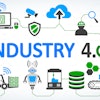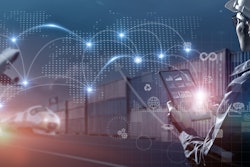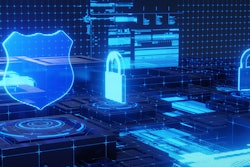
Businesses are constantly looking for ways to optimize their operations and reduce costs while delivering exceptional customer experiences. One way to achieve these goals is by tracking goods and assets to provide visibility into their location, movement and the transit state – whether en-route to warehouses or retail locations or stored within their facilities. While there are a variety of options for tracking assets, LoRaWAN networks and sensors are increasingly becoming a solution of choice across supply chains.
LoRaWAN offers many benefits over alternatives like cellular networks, radio frequency identification (RFID), Wi-Fi, and Bluetooth (BLE). Among those are lower deployment and maintenance costs, an ever-growing ecosystem of standards-based tracking devices and environmental sensors, as well as rapidly growing national, regional and global network coverage across land and sea transportation and in-building environments.
Understanding the Benefits of LoRaWAN Technology
LoRaWAN is an unlicensed spectrum low-power wide area network (LPWAN) protocol, designed to support a massive number of devices simultaneously, making it ideal for tracking and monitoring a wide range of assets, regardless of their quantity or location. The key components of a LoRaWAN asset tracking solution are the devices, the network (gateways network management software) and the supply chain visibility application.
LoRaWAN devices (trackers and environmental sensors) are low cost, built for long-range connectivity, and available to support just about any supply chain need. For example, LoRaWAN-GPS trackers can be used to manage high-value outdoor assets while LoRaWAN-BLE devices are used for indoor tracking. These all operate on low power, enabling extended battery life over long periods eliminating the need for frequent battery replacements or recharging. A recent innovation introduced to the market also delivers LoRaWAN network-based location estimation for applications that don’t require precise coordinates, but where tracking data combined with other environmental information is beneficial.
LoRaWAN networks can be public, private or hybrid. While public LoRaWAN networks are available across most major transportation routes, private LoRaWAN networks can be built and managed at a very low cost. Hybrid public/private networks are a common implementation for asset tracking as they deliver flexibility and consistent connectivity for a combination of outdoor and indoor supply chain needs. Integrations between terrestrial and satellite LoRaWAN networks also provide far-reaching and cost-effective connectivity for a wide range of fixed, mobile, and nomadic use cases.
Data from LoRaWAN sensors is consumed by an end application, providing increased supply chain visibility and management for users. This may be an inventory management system (IMS), a warehouse management system (WMS), order management system (OMS) or enterprise resource planning system (ERP). With more location and state data being captured throughout the supply chain, businesses can make informed decision and act in real time to improve operations.
Examples of LoRaWAN-Powered Use Cases
Growing in popularity, LoRaWAN technology is well suited for location tracking, presence detection, environmental monitoring, geofence location alerts, proof of delivery, and other mission-critical supply chain visibility requirements. Key use cases include:
Inventory management. With LoRaWAN, businesses can efficiently monitor and manage inventory levels, eliminating the risk of human error from manual processes. LoRaWAN sensors on pallets, in trucks, or in storage areas can be used to automatically track inventory levels, monitor stock movements, and provide timely alerts of mishandling or discrepancies.
Cold chain monitoring. Temperature-sensitive goods require special care during transportation and storage. LoRaWAN devices are integral to diligently tracking and monitoring temperature, humidity, and other environmental conditions. This data helps businesses ensure that perishable items, such as food or pharmaceuticals, are kept within the required temperature range, minimizing spoilage, and guaranteeing product quality.
Returnable asset tracking. Returnable assets like pallets, containers, kegs, or crates play a crucial role in the supply chain. LoRaWAN tracking provides the data to effortlessly monitor the location and usage of these assets, optimizing asset utilization, reducing loss, and improving asset recovery processes.
Theft prevention and security. Protecting valuable assets is a top priority for supply chain professionals. LoRaWAN devices can be seamlessly integrated with security features like motion sensors or tamper detection mechanisms, particularly in warehouses. By creating a smart building scenario, businesses can keep a watchful eye on asset movement in real-time and receive immediate alerts in case of unauthorized access or theft attempts, bolstering security and safeguarding assets.
Asset tracking and condition monitoring are critical to ensuring goods are transported, received, and delivered on time and in proper condition. By embracing LoRaWAN-powered solutions, businesses can reach new levels of efficiency, transparency, and security. As more companies continue to look for ways to reduce cost while boosting efficiency, LoRaWAN technology offers a robust option that empowers supply chain professionals with the data they need to manage costs, streamline operations, and make informed decisions while delivering high quality customer experiences.


















